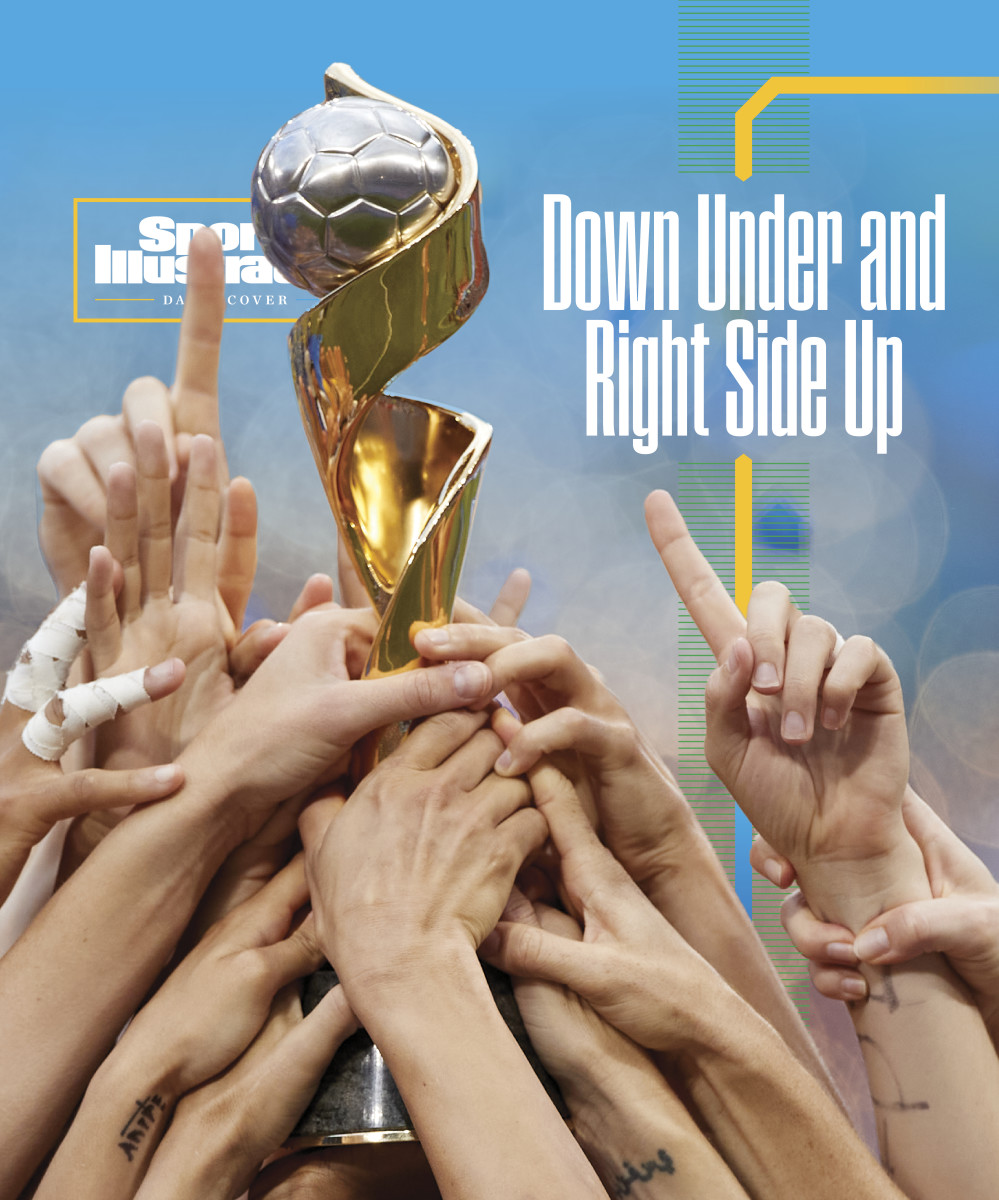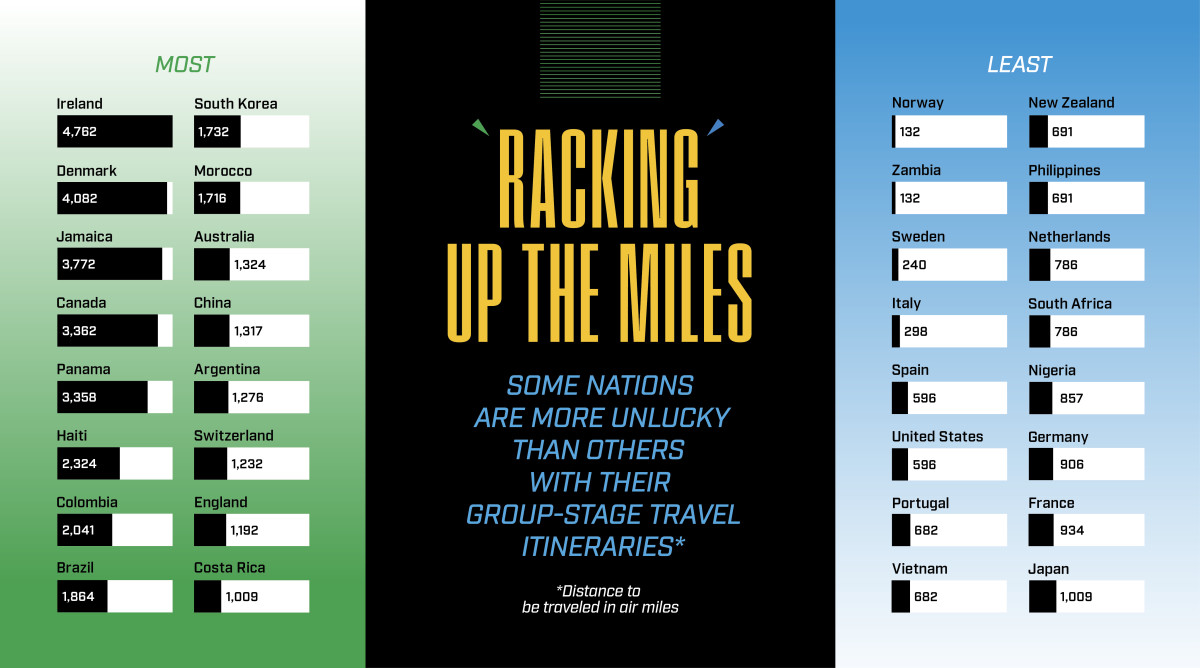Australia and New Zealand Are Eager to Show a More Inclusive Version of Themselves
The final match of the 2023 FIFA Women’s World Cup will be held at Stadium Australia in Sydney and will kick off at 8 p.m. local time Sunday, Aug. 20. This means somewhere between the wee nighttime hours and the bleary-eyed morning ones here in America—and there’s real symbolism kicking around in there. It’s already a new day in Australia, time booted forward. And, likewise, unmistakable themes of progress and evolution will sound throughout this year’s competition.
Mirroring the explosive growth of women’s sports generally, and women’s soccer specifically, this year’s tournament will feature teams from 32 countries, up from 24. For the first time in the women’s competition, games will be split between two host countries, Australia and New Zealand. For that matter, this marks the first time the event will be held in the Southern Hemisphere.

Gianni Infantino, the pragmatic, sometimes morally compromised head of FIFA, international soccer’s governing body, put it this way when awarding the competition to Australia and New Zealand: “The astounding success [of the previous Women’s World Cup] in France made it very clear that this is the time to keep the momentum going and take concrete steps to foster the growth of women’s football. I am glad to see this proposal becoming a reality.”
Barely a half year removed from the 2022 men’s World Cup, the women now will take center stage. But the settings could scarcely be further apart—both geographically and philosophically.
In the men’s final in December, Argentina defeated France in as gripping a sports contest as one could hope to watch, underscored by the game-within-a-game brilliance of Lionel Messi’s showcase/showdown with Kylian Mbappé. But it did not completely wash away the taint of a problematic host, Qatar, a country long on gushing oil and therefore financial resources, and also long on human rights abuses, a place where homosexuality is criminalized and hundreds of ill-treated migrant workers died in the construction of elaborate soccer stadiums. With some success, Qatar muffled voices of dissent, forbade citizens from being interviewed, displaced its poorest populations to places where the international media could not glimpse them and generally presented itself as a sort of utopia in the desert. FIFA has defended its record in Qatar, pointing to reforms that were spurred by hosting the World Cup, but it undeniably worked hand in hand with an authoritarian regime engaged in a $200 billion branding exercise.
In Australia and New Zealand, organizers are doing the opposite, using the event as an occasion for national examination. Australia, especially, will reveal its social fabric, tatters included. The greatest stain in the country’s national history is its treatment of its Aboriginal population, in particular a policy ended in only 1971 permitting the government to forcibly remove children and indoctrinate them into the religion, language and culture of the dominant white society. Legalized kidnapping, it’s been called. The last half century brought on some measure of reckoning and reconciliation, but the First Nations population still fares worse in employment, substance use, health outcomes and life expectancy.

Australia and New Zealand are going great lengths to showcase their native cultures. In a shocking upset, there is no marsupial on the tournament logo; instead it’s an array of 32 squares made into a Māori and Indigenous Australian design. All host cities feature English wording alongside te reo Māori (New Zealand) and First Nations (Australia) name translations. The World Cup draw last October included an official Māori welcome, and all milestone events will “feature cultural elements to raise the profile of First Nations and Tangata Whenua communities in football.”
As Dave Beeche, CEO of the FIFA Women’s World Cup, put it: “We are proud to see our Māori and Indigenous Australian cultures play a key role in the creation of this powerful and unique global brand. We believe it’s a fitting symbol of our plans to deliver a tournament that will not only take players and fans Beyond Greatness, but continue the incredible momentum already underway in the growth of women’s sport and gender equality.”
This rhetoric was tested earlier this year when the tourism arm of Saudi Arabia—a country, incidentally, bidding to host a future men’s World Cup—signed on to sponsor this women’s edition. After organizers initially accepted the offer, the backlash was fierce. How could the event take money from a regime where women were only recently permitted to drive, where rainbow-colored toys are removed from shelves lest they encourage homosexuality? The pressure was such that FIFA—a body not known for rejecting revenue, nor for holding much of the moral high ground—reversed course and declined the Saudis.
The event will not be perfect nor free of snags. No global sporting event is. How will players cope with the travel, potentially playing in two countries, spanning from Perth in western Australia to Auckland, 3,500 or so miles away? July and August are winter months Down Under, so heat is not a concern, but will the increasingly moody climate whip up nasty wind and rain?

Australia and New Zealand will (quietly) admit that hosting this World Cup is not merely an exercise in hospitality. Their teams are playing to win, both trying to become the first host country to place first since Brandi Chastain’s goal pushed the U.S. past China at the Rose Bowl in 1999, that pathbreaking moment for the event. To do so, they will have to overcome teams from the U.S.—the defending champ, which has won four of the eight Women’s World Cups; England—which won Euro 2022; and Spain—which boasts Alexia Putellas, a 29-year-old midfielder who might well be the sport’s brightest star.
Not that you’ll hear either country making bold public pronouncements, neither about its team’s prospects nor its ambitions as host. Here’s another pastime of the Antipodes: “lopping poppies,” as it’s called, essentially, cutting braggarts down to size. As Hayley Raso, a winger for the Matildas, said, “Don’t say what you’re going to do. Show what you’re going to do.”
Now that’s a potential motto for the Women’s World Cup, right up there with “unity” and “believe” and “beyond greatness.”
